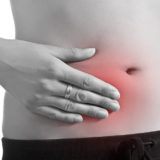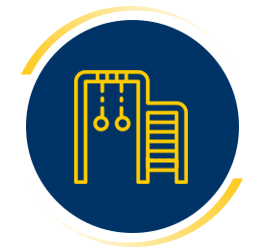
Pelvic pain, for most of us we have no idea what it means and if so be glad. It’s excruciating pain deep in the pelvis area that can be unbearable with almost no hope in sight. There are some new procedures and techniques out there that have been great at helping people with this problem and several web sites are helpful as well. A friend of mine has become very familiar with this subject and has dedicated herself to helping others with this pain. Her name is Elisabeth Oas.
So what are the pelvic floor muscles? Together with the muscles of the low back and abdomen they make up the core muscles and act like the strings in a hammock to support the surrounding structures of the pelvis. These muscles are also responsible for cutting off the flow of urine from the bladder and support the bladder and intestines. In women they are especially important because they support the uterus. One of the muscles, the Pubococcygeus or PC muscle is responsible for stabilizes the openings of the urethra, vagina and anus. These openings can be compromised if the PC muscle is weak or in spasms which can be very painful. Now can you image what childbirth can do to them. Other things that can cause problems are excessive coughing, aging and inactivity. Not to mention holding your pee or poop which many woman are known for. Sorry ladies, I said it and I went there. So some of the problems that can occur from a weak pelvic floor are incontinence, pain during sex, and a prolapsed uterus or bladder, which is the dropping of these organs into the pelvic muscles. Ouch!!! Another thing I noticed woman tend to do (I have two sisters and have been married for 7 years) is if they are wearing an outfit that reveals their tummy in any way, one tends to flex or flatten their stomach out the entire night. Not only is this bad for the pelvic floor it’s bad on many other levels. That lack of oxygen causes muscles not only in the pelvic floor to have problems but the diaphragm and heart as well. An entirely new blog on that one.
Now that I have either thoroughly scared you or grossed you out, I will explain how to keep these muscles healthy and happy.
DONT’S:
1) Do not force going to the bathroom.
2) If you are experiencing any pain I just described, avoid abdominal exercise like crunches or crunches combined with leg lifts. This forces pressure down onto already overworked pelvic floor muscles and can add to trigger points or spasms.
3) Avoid exercise that force excessive downward pressure into the pelvic floor and cause the stomach to bulge at the same time. A good example of this are wide feet squats and deadlifts. Basically any movements that require one to wear a supportive abdominal belt.
4) Avoid excessive coughing.
5) Inactivity or sitting for lengthy periods of time on a hard cold surface. Can you say your kids soccer game or football game. Those bleachers are brutal.
6) Constipation or diarrhea. Overworks the muscles and places excessive strain on them.
DO’s:
1) RELAX!!! Stress is the number one reason for many of our health problems. Breathe deep and exhale slowly whenever you’re stressed out. This alone helps more than anything because it creates an overall calming effect. Muscles run on oxygen and feeding them helps them function properly and relax properly.
2) Eat good fibrous foods and drink plenty of water. This will help with constipation and I don’t need to say more.
3) Exercise properly.
Below are some ideas regarding exercise. There are some things you can do to help these muscles stay strong without over working them.
a. Kegels exercises. Created by Dr. Kegel they were originally used to help woman recover muscle tone after pregnancy in that certain area. I won’t go there on this one. It involves a series of flexing the muscles that stop the flow of urine. Although it seems like a good idea to do this while going to the bathroom it is not. See this link for more on Kegel exercises: NOTE: If your pelvic pain is caused by Myofacial Trigger Points, you may aggravate your pain. So be careful and check with your doctor before self-diagnosing.
b. Stomach draw or vacuum. Start by lying on your back. Exhale all your air and then try to pull your stomach in like your trying to touch your belly button to your spine. Hold for 5 seconds and rest. Do this 7 times. That’s 1 set. Do one set in the morning and one in the evening before bed. This exercise is also great for flattening the stomach as it works the Transverse Abdominis, which acts like a natural weight belt to hold the stomach in.
c. Planks. Some people may argue with me on this one but I believe they work great as long as you do not over due it by making them too hard. The safest way to make it work is to just hold a push up position on your hands or elbows for 30 seconds. Be sure to tuck your butt down and flatten your back to support your spine. Breathe in and out slowly and controlled.
If you would like to see some of these exercises demonstrated click here.
It’s important to have a well-rounded core-training program that strengthens all the muscles. If you are not familiar with this, hire a personal trainer or a physical therapist.
It’s also important to remember that if you are experiencing pain in the pelvic area not to brush it off as weak muscles or spasms. There are many other diseases that can be under lying such as IC (Interstiital Cystitis of the Bladder), PFD or Pelvic Floor Dysfunction, Endometriosis, Prostaitis, a bladder infection, Cancer and many more. So always consult with your doctor first before self diagnosing yourself.






